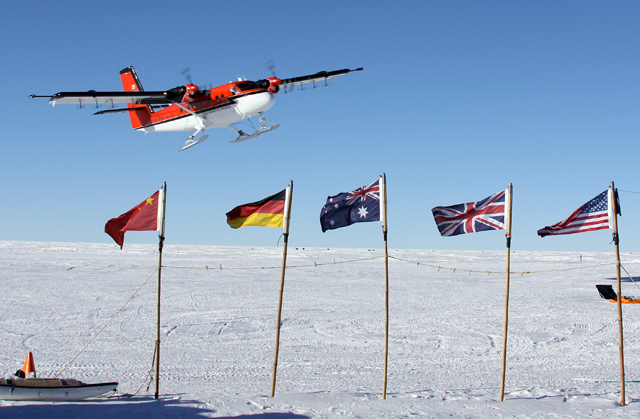|
Frozen at the bottomAGAP scientists turn understanding of ice sheet dynamics upside downPosted March 4, 2011
More Information
Scientists working in the remotest part of Antarctica have discovered that liquid water locked deep under the continent’s coat of ice regularly thaws and refreezes to the bottom, creating as much as half the thickness of the ice in places, and actively modifying its structure. The finding, which turns common perceptions of glacial formation upside down, could reshape scientists’ understanding of how the ice sheet expands and moves, and how it might react to warming climate, they say. The study appears in this week’s early online edition of the leading journal Science. The research is part of a six-nation study of the invisible Gamburtsev Mountains, which lie buried under as much as two miles of ice in East Antarctica. Using aircraft (see above photo) equipped with ice penetrating radars, laser ranging systems, gravity meters and magnetometers, the research team flew low-altitude transects back and forth over the ice to draw 3-D images of what lay beneath during the 2008-09 field season. The goal of Antarctica's Gamburtsev Province Project (AGAP) “Water has always been known to be important to ice sheet dynamics, but mostly as a lubricant. As ice sheets change, we want to predict how they will change. Our results show that models must include water beneath,” said Robin Bell For the rest of the story, see Some Antarctic Ice is Forming from Bottom |





